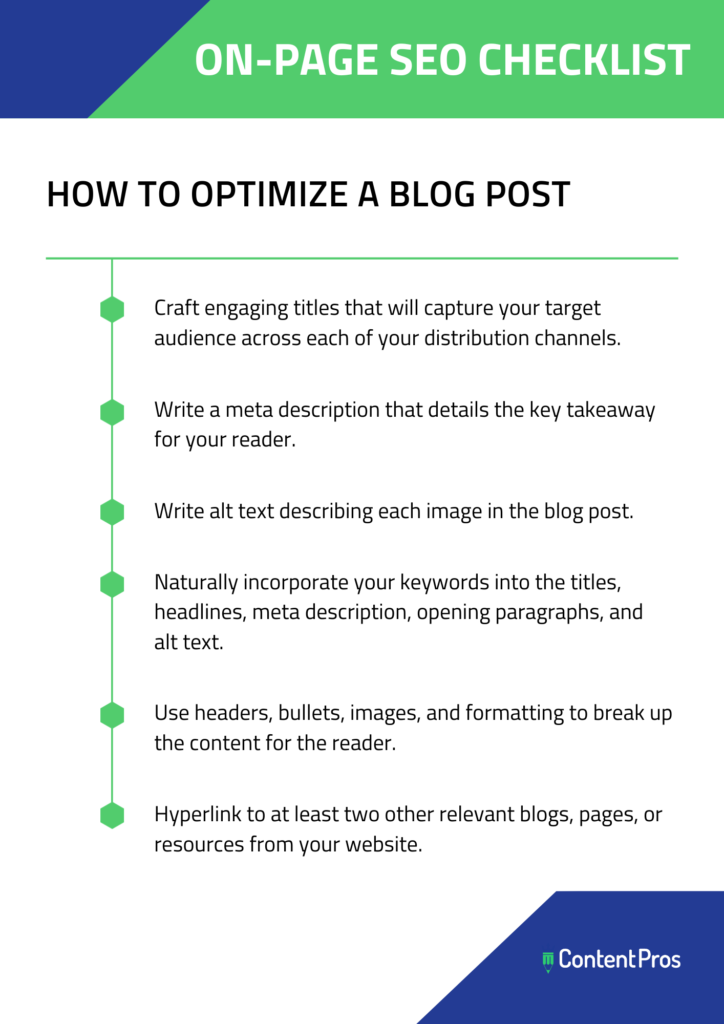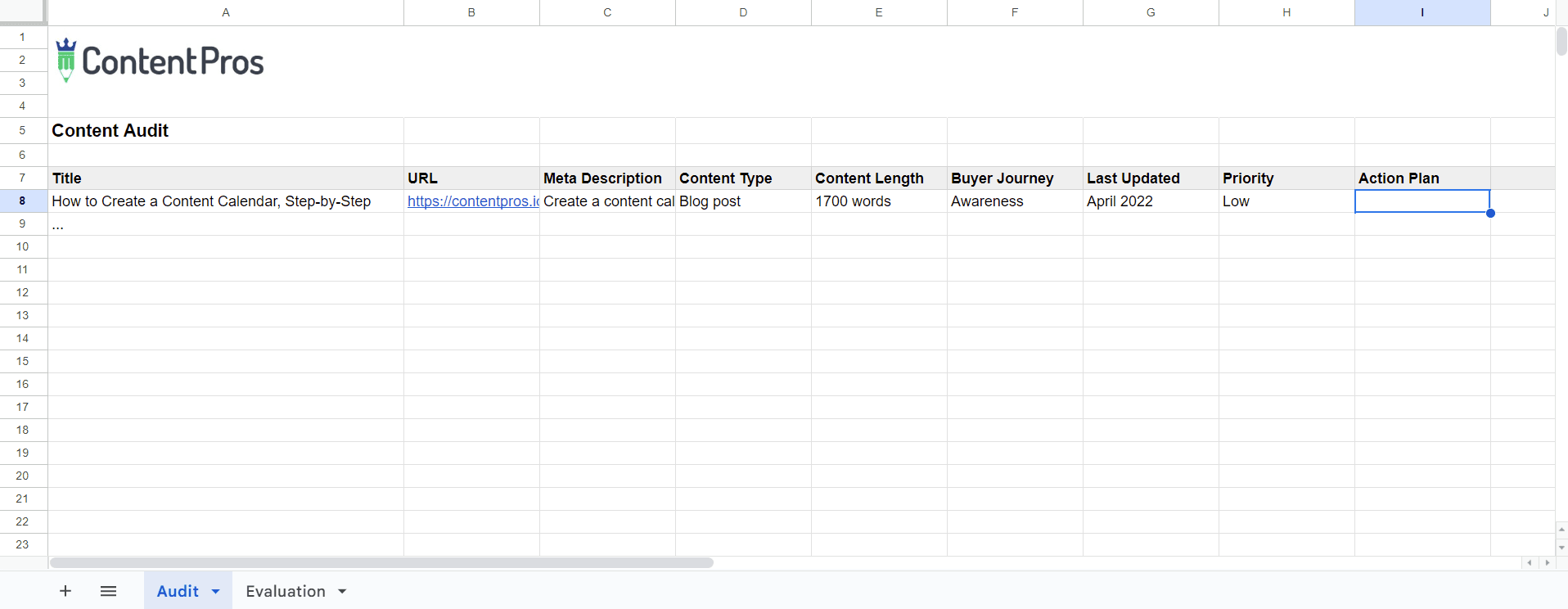Explaining complex subject matter in a way that both non-technical and expert audiences can relate to requires equal parts knowledge and writing skill. That’s why technology companies have such unique preferences and requirements for content writing. The technology field is constantly evolving, so staying up to date with the latest jargon, trends, and best practices is essential for content marketers. Here’s how our tech content writers do it.
9 Tips from Professional Tech Content Writers
Mastering the technical aspects of content writing takes time and dedication, but there’s more to it than that. Follow these content writing tips to help you find your audience, organize your time, and deliver high-quality content consistently. These tips can also help you know what to look for when you need to hire a tech content writer or find a content writing service for your technology business.
1. Create a buyer persona
Before you begin writing content, you need to know who your audience is. That doesn’t mean simply listing target demographics. Visualizing a real human customer helps you set the right tone and incorporate the right level of technical jargon. For example, a buyer persona for a typical IT professional might look something like this:
Tom is a 50-year-old IT manager for a medium-sized educational products company. He is single, has no pets, and spends most of his free time reading about the latest technology and tinkering with electronics and other gadgets. Tom prides himself on discovering the latest and best IT tools and convincing management to purchase them for his 5-person IT team.
If you were writing for someone like Tom, you might want to emphasize the latest features of your product and explain what sets it apart from the pack. Since Tom might want to relay this information to his superiors, you would also make sure all technical jargon was explained and the content was digestible for less technical readers.
Follow these steps to create a buyer persona for your business.
2. Conduct keyword research
Gone are the days when you could simply create a great product and let buyers find it organically. Google and other search engines use algorithms to identify the most relevant content for a given user search. Keyword research is the process of identifying the words and phrases your target customers are likely to be searching for and using them to attract your audience.
Keyword research can be challenging for tech subjects since it’s sometimes hard to know a user’s intent when they search for technical jargon. The competitiveness of this field also makes it difficult to rank for general keywords, so more specific keywords (known as long-tail keywords) are more effective. For example, all-in-one cloud monitoring software for SMBs might be a better choice than cloud monitoring tool.
Website analytics, such as Google Analytics, make it easy to see how often people are searching for various keywords and which keywords are driving the most traffic to your site. Once you’ve completed the bulk research, use keyword clusters to expand your list with related phrases and questions your audience is using to search for your product or service.
Here’s how to do keyword research for SEO, including all the free tools you’ll need.
3. Develop a content calendar
A content calendar is a schedule that identifies the topics you want to write about over the course of the year. It’s extremely useful for brainstorming, creating, and organizing topics and can help you visualize the logical sequence of content over time. The technology field changes quickly, so your content calendar should be flexible enough to substitute or update topics as needed.
A content calendar also helps the content writer and marketing team establish a mix of content that creates a funnel leading from thought leadership to product specific content to support-based content designed to help customers who already own your products. For tech subjects, a cascade of scheduled content might include:
- Thought leadership content delving into new technologies or unmet market needs without mentioning specific solutions.
- Content that highlights the specific benefits of your software, hardware, or other product.
- Articles containing tips, how-tos, and troubleshooting guides dedicated to supporting and retaining existing customers. This is essential for products like SaaS that rely on customer retention for profitability.
Follow these five steps to create your content calendar using our free template.

4. Start each piece with an outline
It may be tempting to rely on your passion and wing it as you produce new material, letting the ideas and format flow in the process. However, the time spent organizing the key points, sub-topics, and call to action (CTA) into a high-level outline will help you create content faster. Planning your basic flow in advance also makes it easier to focus on content vs. structure during the writing process.
AI tools like ChatGPT and Google Bard can also be useful for creating outlines quickly. While their output will need some tweaking, it can give you a basic structure to build upon. If you use AI tools for outlining, keep in mind that the information they provide may be dated, which can become an issue for many rapidly evolving tech-related topics. Additional research will be needed to fact check and customize the outline for your needs.
5. Ask a SME to proofread
Unless you happen to have both Technology Professional and Writer Extraordinaire highlighted on your resume (most mere mortals don’t), it’s a good idea to consult with a subject matter expert (SME) at various points in the content writing process. This can include the outline stage, final draft, and any point in between where you need in-depth tech knowledge and experience. The many benefits of SME support include:
- Guidance on hot industry topics from an insider perspective.
- Pointing out misplaced use of jargon or acronyms that could diminish your credibility.
- Suggestions for new sub-topics that can distinguish your content from the pack.
- Real-world examples and timely product-specific use cases.
Many technology content writing services retain in-house SMEs for this purpose. Collaborating with clients regularly is a good way to ensure their unique knowledge and perspective is applied to the content consistently.
6. Edit
It’s as simple as that. No matter how important or timely the subject matter is, poor grammar, spelling, or flow will drive visitors away quickly. And it doesn’t really matter who wrote the content or what pearls of wisdom they included. Why? Proper editing shows the mindfulness and commitment readers look for as signs of credibility. This is essential in the competitive tech space.
A good editor will improve content readability by shortening overly wordy sentences and toning down technical jargon as needed. Fact checking technical details can prevent simple errors or unreliable resources from confusing readers unnecessarily. Well-edited content also improves search engine optimization (SEO) since search engines use indicators of content quality for ranking.
7. Create an on-page SEO checklist
Naturally incorporating well-researched keywords into your content is just one tool in your toolkit. SEO is so important in the ultra-competitive tech industry that you need to make use of every available angle. An on-page SEO checklist can help you keep SEO best practices in mind before, during, and after the writing process. A checklist will remind you to create meta descriptions, page titles, linked resources, and images for every piece of content. These details can make all the difference when it comes to creating a positive experience for readers and ranking higher on search engines.

8. Craft content upgrades
High-quality technology content writers who make their work stand out in a sea of blog posts, research articles, and white papers will always leave readers wanting more, and this opportunity shouldn’t be wasted. A content upgrade is a valuable marketing funnel entry point that offers readers more exclusive content in exchange for their email address. The content upgrade includes three basic components:
- The call-to-action
- The email opt-in popup
- The upgraded content
A content upgrade will only be successful if it meets the reader’s expectations. Think back to your buyer persona; what additional content would your hypothetical IT manager be looking for that they could not find elsewhere? Your A+ bonus content should be as well-researched and timely as possible to add value for the reader.
9. Audit content annually
Stale content can hurt credibility and drive away traffic quickly, perhaps never to return. One of the best ways to ensure your content is up to date and continues to rank well is by performing a content audit at least once a year, if not more. A structured audit should include a technical review as well as an SEO review to discover how well existing content is performing. Audit deliverables may include:
- A review of basic metrics including page views, clicks, bounce rates, and social shares.
- A comparison of published content to the latest industry facts and figures.
- An SEO review to find out how well the content is ranking and determine whether keywords need refreshing.
The most important part of any content audit is the follow-up. Each audit should result in a list of required actions, complete with owners and due dates. Use our free content audit template to streamline your process.

The Soaring Prospects for Technology Content Writing
Great writers are in high demand, and companies looking to hire a technology content writer put a premium on reliable tech content writing services and well-versed in-house experts. This should come as no surprise, since content writing combines artistry, relatability, and technical acumen – a rare combination indeed! While not everyone can become the best content writer, applying additional structure, research, collaboration, and strategy to the writing process can only yield positive results.
Schedule a call today to find out how Content Pros can help you meet your unique technology content writing goals.

